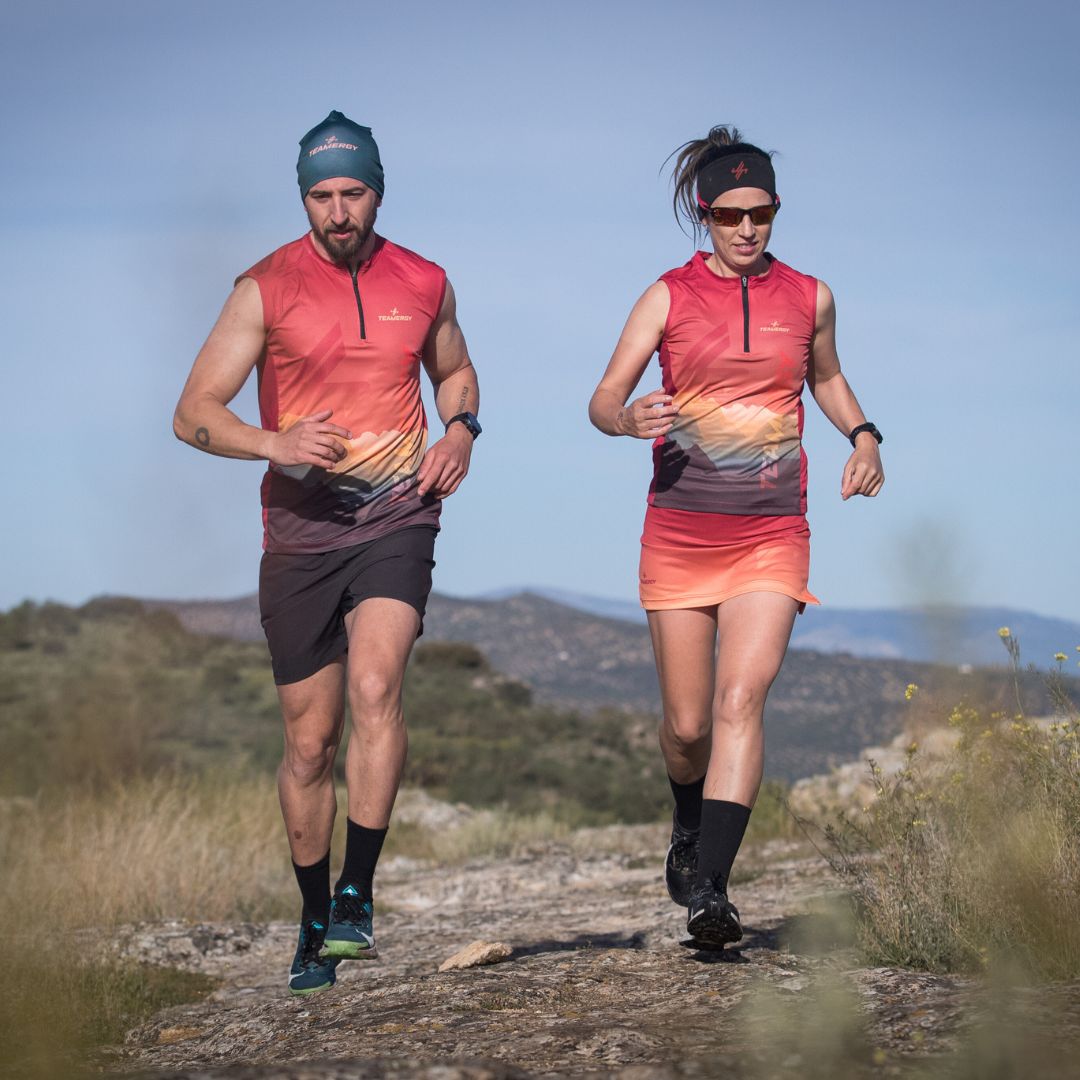Trail running, with its direct connection to nature and the challenge of overcoming uneven terrain, has become one of the most exciting and enriching sports today. However, starting in this sport requires preparation, knowledge, and patience, where it is also important to know some basics to avoid injuries and enjoy every kilometer. If you are thinking of embarking on this adventure and preparing for your first race, here are 10 key tips to get started on the right foot.
1. Equip yourself properly to run
Equipment is essential for your safety and comfort in trail running. Make sure you have specific trail shoes designed to provide traction on uneven terrain and protect your feet from stones or roots. Additionally, invest in suitable technical clothing, such as breathable and durable shirts, anti-chafing socks, and, depending on the weather, lightweight windbreakers. A hydration vest or belt will be your best ally on long routes. Finally, a GPS watch can help you navigate new routes and monitor key parameters (time, heart rate, pace...). At Teamergy, we offer a wide range of fabrics and garment patterns tailored to the specific needs of each runner and their uses. Explore all the possibilities in our custom trail catalog.
2. Start first with outings on easy terrain
Although images of steep peaks can be inspiring, don't jump into overly technical routes during your first training sessions. Look for local trails with gentle elevation changes and compact terrain. This will allow you to familiarize yourself with the environment and avoid unnecessary injuries.
3. Work on your strength and endurance
Trail running requires more effort than running on asphalt. Incorporate core and strength training into your routine to strengthen your legs, especially the quadriceps, hamstrings, and glutes, which work intensely on the climbs and descents. It is also crucial to improve your aerobic capacity with long runs, bike rides as complementary training, or exercises like hill repeats. All these strength workouts will fortify your legs to withstand the loads they will face on the steepest trails.
4. Learn to manage elevation
The ups and downs are the essence of trail running, and learning to master them will make a difference in your progress and success in races. On the climbs, adopt a comfortable, maintained pace and don't hesitate to walk if necessary; even the most advanced runners do this on steep sections. For the descents, control your speed to avoid injuries while maintaining a relaxed posture with your arms slightly open to help you balance.
5. Plan your outdoor training
Running in nature and mountains is very different from training in a park or on a gym treadmill. Familiarize yourself with maps and hiking apps like Wikilock or similar to explore nearby routes. This will not only allow you to train in more realistic conditions but also learn to navigate, an essential skill for trail races where course marking may be sparse or visibility conditions less favorable.
6. Prepare to run with a vest or belt
In trail running, especially in long distances, carrying a hydration vest or belt with water, gels, salts, and basic gear is very common. Practice running with this extra weight to adapt. Additionally, experiment with energy supplements and other foods preferably during training, never in a race, to find out what works for you and avoid potential stomach issues from their intake.
7. Adapt your running technique
Forget about the long and regular stride of the asphalt. In trail running, the ideal is a short and agile stride that allows you to adapt quickly to the terrain. Lift your feet higher to avoid tripping and keep your gaze a few meters ahead to anticipate the unevenness of the terrain.
8. Respect the philosophy of trail running
Respect for nature and other users on the trails is essential. Do not leave trash and follow the principle of 'leave no trace.' In the more demanding and competitive races, yield to faster runners in narrow sections and respect the organizers' instructions at all times to avoid accidents.
9. Participate in group training or local events
Joining trail running groups or participating in organized training will help you learn from more experienced runners, discover new routes, and motivate yourself. Additionally, you will become familiar with the environment and the dynamics of races in this sport.
10. Choose your first race wisely
Be realistic and look for a race that matches your level. Opt for short distances, between 10 and 15 km, with a moderate elevation gain. Research the organization, supplies, and terrain conditions. This will give you confidence and a positive experience for future races. Starting in a race where you have to drop out or push your body to the limit will result in bad feelings.
Go ahead!
Starting in trail running can be a physical and mental challenge, but it is also a unique opportunity to connect with yourself, with wonderful people, and with nature. Take it as a progressive process and enjoy the journey. Each trail, each climb, and each conquered goal will remind you why you chose this sport.
Ready for the challenge? The mountain is waiting for you!










Leave a comment
This site is protected by hCaptcha and the hCaptcha Privacy Policy and Terms of Service apply.